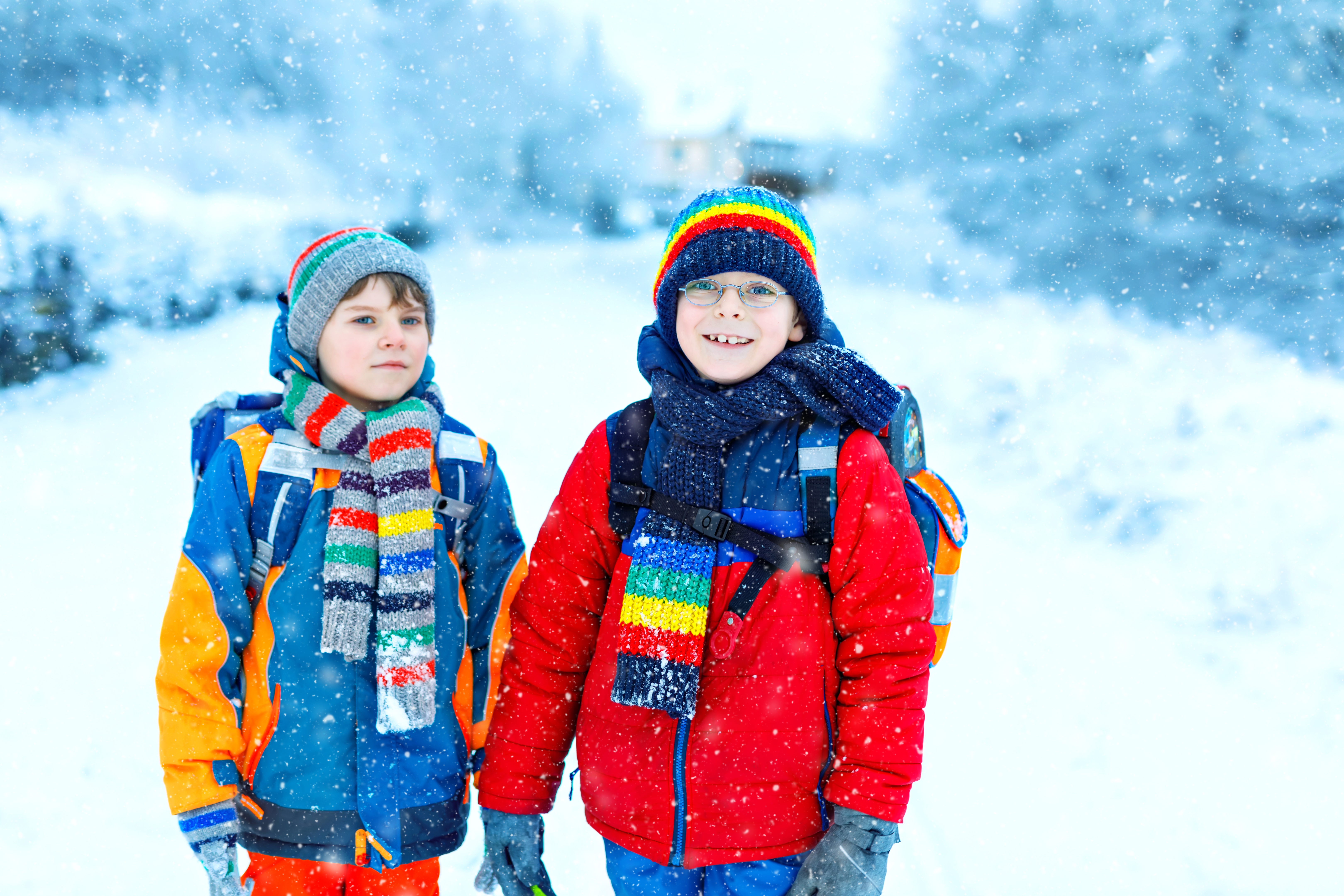
Winter Outdoor Activities for Language Arts
Even when it’s chilly, plan to get outdoors with your students! Have everyone bundle up, and take language arts learning outside during this winter season.
DESCRIPTIVE WORDS WINTER SCAVENGER HUNT
Provide a quick review of the basic parts of speech. Nouns are people, places, and things. Ask students what nouns they expect to find outside during winter. Trees? Pine cones? Rocks? Sticks? Those are all nouns.
Adjectives are words that describe nouns. Trees can be described as rough and tall. Pine cones can be described as scaly and spiky. Rocks can be described as smooth and curved. Sticks can be described as hard and pointy. Rough and tall, scaly and spiky, smooth and curved, hard and pointy — these are all adjectives that describe nouns. Ask students what adjectives they expect to use to describe nouns they find outside during winter.
Help students remember how nouns and adjectives function as parts of speech with the following said to the rhythm of “Are You Sleeping (Brother John)?”
Nouns are people.
Nouns are places.
Nouns are things.
Nouns are things.
Adjectives describe nouns.
Adjectives describe nouns,
and how they are indeed.
In the Descriptive Words Winter Scavenger Hunt, students will find things (nouns) outside and categorize the nouns using appropriate adjectives to describe them. Provide students with a list of adjectives that could apply to outdoor items found during winter. Adjectives may include the following.
| bent | dark | large | scaly | smooth |
| bright | delicate | light | sharp | straight |
| bumpy | dense | long | short | striped |
| clear | dry | mushy | spiky | soft |
| cold | flat | pointy | spiny | tall |
| crunchy | hard | rough | spotted | thin |
| curved | heavy | round | small | wet |
After reading the list, encourage students to share other adjectives for this activity. Also, tell students that many of the adjectives are opposites, so they mean different things. For example, rough and smooth are opposites. If desired, match opposites on the list, noting that some can be matched more than once.
Create a list or worksheet with predetermined adjectives or let students select descriptive words to guide their search. Provide students with clipboards and writing utensils to easily record their findings using words and/or pictures. Find and visit a natural area, park, or other outdoor space that students can explore.
When students have completed the scavenger hunt, return to the classroom. Then, have volunteers share their findings with the class and note similarities and differences in adjectives and the nouns they describe. You may choose to extend the lesson to work on sentence structure by having students properly use their nouns and adjectives together to write creative sentences.
HOW-TO GUIDES FOR WINTER ACTIVITIES
Have students show off their creativity with how-to guides for winter activities. How-to presentations help students practice speaking and listening skills. Group students in pairs for collaboration and support. Let students decide on a winter outdoor activity they can demonstrate to the class within a given time frame. Activities should require minimal materials. Activities could be outdoor games, winter dance routines, cold weather exercises, snow or nature building and/or art projects, etc. Offer broad suggestions to students if needed.
After pairs have selected ideas for their how-to guides, have them list materials they will need for their how-to demonstrations. Make sure students think of items they will need as well as any items their audience (their classmates) might need. Then, have students write a numerical outline of steps. Give students time to practice their winter activities and make necessary adjustments through trial and error. Finally, have students present their how-to guides for winter activities outside for the class.
Keep warm in the cold weather by taking exercise breaks between presentations. Exercises could include gentle stretching, winter pose yoga, jumping jacks, lunges, or jumping in place.
Consider taking photos of students during their presentations. Have students pair a picture or two with their how-to instructions and post them in the classroom while the weather is cold. This how-to gallery will serve as a great reminder of fun activities to do outdoors at home or school during the winter season.
Find more cold weather educational ideas with Winter Outdoor Learning Activities for Math and Science.
For more engaging lesson plans that incorporate movement, check out the Walkabouts platform. Walkabouts integrate movement into standards-based lessons and support students’ physical health while they learn. With plans for home or school, with a single student or entire state, there’s a Walkabouts subscription that’s right for you.





